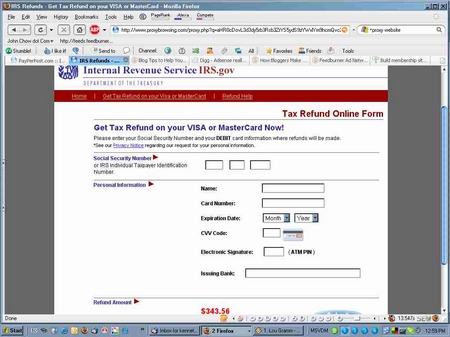InvestorBlogger doesn’t often write about scams, but this time I received one scam email that was quite surprising, but obviously a fraud to me. In Taiwan, there’s been quite a bit of publicity about scams involving overpaid taxes being returned. So the nature of the scam wasn’t new to me. Still, if you receive an email looking like this. Beware.
It looks innocent enough, but given the fact that I don’t submit US tax returns, and I’m not a US citizen. I don’t even live there, enough reason to just hit ‘delete’.
But for my readers, I decided to investigate a little further. The link to the scam website was obvious enough, though. Also, the tone of the email was just wrong for an official communication. Why would the IRS hide an address in the first place? And why would the IRS use a website that doesn’t even link to the IRS, but is registered as a Swiss domain (*.cc)…. Mmm. Enough warnings yet?

I accessed the website through a proxy server to mask my IP address at home. I don’t know about it being a wise move to visit the website at all, though, as many of these websites attempt to load spyware and other nasties on your computer at the same time as defrauding you. So, don’t be tempted to click! I now regret that I did.

The website then asks you to verify your details (a typical scam trick) without inputting details about your tax filing information or even basic information personal information. Lastly, the website asks you to submit your credit card details to retrieve your payments. The IRS only offers two methods for return of taxes (and neither one involves a credit card).
And if you never submitted an email address to the IRS or the form arrives in an email address that you never used, you can simply dump it. So there are a lot of ways that you can determine if the email is a scam, a spam or genuine.
Email is a useful form of communication, but you still need to be ware any requests for sensitive information. If in doubt, visit the website of the purported institution by directly entering the information in your browser window.